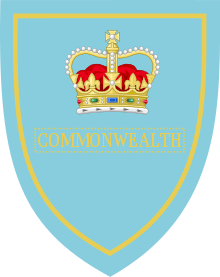This is the Korean War order of battle. Subsidiary commands are listed on sub-pages. Where no date is shown for a command, assume it present at the start of the war, on June 25, 1950.

The Battle of Kapyong, also known as the Battle of Jiaping, was fought during the Korean War between United Nations Command (UN) forces—primarily Canadian, Australian, and New Zealand—and the 118th and 60th Divisions of the Chinese People's Volunteer Army (PVA). The fighting occurred during the Chinese Spring Offensive and saw the 27th British Commonwealth Brigade establish blocking positions in the Kapyong Valley, on a key route south to the capital, Seoul. The two forward battalions—the 3rd Battalion, Royal Australian Regiment and 2nd Battalion, Princess Patricia's Canadian Light Infantry, both battalions consisting of about 700 men each—were supported by guns from the 16th Field Regiment of the Royal Regiment of New Zealand Artillery along with two companies of US mortars, fifteen Sherman tanks from US 72nd Heavy Tank Battalion, two companies of the US 74th Engineer Combat Battalion and 1st Battalion, Middlesex Regiment. These forces occupied positions astride the valley with hastily developed defences. As thousands of soldiers from the Republic of Korea Army (ROK) began to withdraw through the valley, the PVA infiltrated the brigade position under the cover of darkness, and assaulted the 3 RAR on Hill 504 during the evening and into the following day. Five companies of the US and UK forces attached to 27th Brigade fled the battlefield without orders, expecting an imminent PVA breakthrough at the Kapyong Valley.
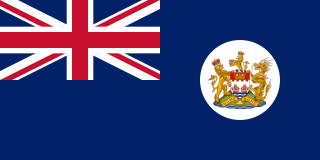
British Forces Overseas Hong Kong comprised the elements of the British Army, Royal Navy and Royal Air Force stationed in British Hong Kong. The Governor of Hong Kong also assumed the position of the commander-in-chief of the forces and the Commander British Forces in Hong Kong took charge of the daily deployment of the troops. Much of the British military left prior to the handover of Hong Kong to China in 1997. The present article focuses mainly on the British garrison in Hong Kong in the post Second World War era. For more information concerning the British garrison during the Second World War and earlier, see the Battle of Hong Kong.

The 27th Infantry Brigade was an infantry brigade of the British Army that saw service in the First World War, the Second World War, and the Korean War. In Korea, the brigade was known as 27th British Commonwealth Brigade due to the addition of Canadian, Australian, New Zealand and Indian units.

The 29th Infantry Brigade was an infantry brigade unit of the British Army. It was originally raised in 1914 and saw service during the First and Second World Wars and the Korean War.

The Battle of Pakchon, also known as the Battle of Bochuan, took place ten days after the start of the Chinese First Phase Offensive, following the entry of the Chinese People's Volunteer Army (PVA) into the Korean War. The offensive reversed the United Nations Command (UN) advance towards the Yalu River which had occurred after their intervention in the wake of the North Korean invasion of South Korea at the start of the war. The battle was fought between British and Australian forces from the 27th British Commonwealth Brigade with American armour and artillery in support, and the PVA 117th Division of the 39th Army, around the village of Pakchon on the Taeryong River. After capturing Chongju on 30 October the British and Australians had been ordered to pull back to Pakchon in an attempt to consolidate the western flank of the US Eighth Army. Meanwhile, immediately following their success at Unsan against the Americans, the PVA 117th Division had attacked southward, intending to cut off the UN forces as they withdrew in the face of the unexpected PVA assault. To halt the PVA advance, the 27th British Commonwealth Brigade was ordered to defend the lower crossings of the Taeryong and Chongchon rivers as part of a rearguard, in conjunction with the US 24th Infantry Division further upstream on the right.
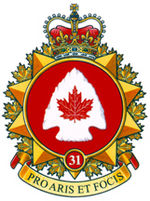
31 Canadian Brigade Group is part of the 4th Canadian Division, under the Canadian Army. It encompasses the southwestern portion of Ontario, and is headquartered in London, Ontario. The 31 CBG area of responsibility stretches from Hamilton to Windsor. The brigade has approximately 2,400 soldiers. Colonel Chris Brown, CD is Commander of 31 Canadian Brigade Group. The brigade sergeant-major is Chief Warrant Officer Mike Coit, CD.

Australia entered the Korean War on 28 September, 1950; following the invasion of South Korea by North Korea. The war's origins began after Japan's defeat in World War II, which heralded the end to 35 years of Japanese occupation of the Korean Peninsula. The surrender of Japan to the Allied forces on 2 September 1945, led to the division of Korea into two countries, which were officially called the Democratic People's Republic of Korea (DPRK) and the Republic of Korea (ROK), with the DPRK being occupied by the Soviet Union, and the ROK, below the 38th Parallel, being occupied by the United States (US).
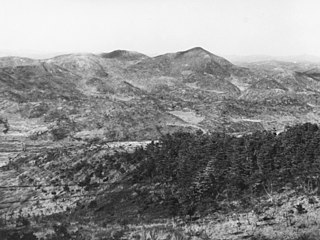
The First Battle of Maryang-san, also known as the Defensive Battle of Maliangshan, was fought during the Korean War between United Nations Command (UN) forces—primarily Australian, British and Canadian—and the Chinese People's Volunteer Army (PVA). The fighting occurred during a limited UN offensive by US I Corps, codenamed Operation Commando. This offensive ultimately pushed the PVA back from the Imjin River to the Jamestown Line and destroyed elements of four PVA armies following heavy fighting. The much smaller battle at Maryang-san took place over a five-day period, and saw the 1st Commonwealth Division dislodge a numerically superior PVA force from the tactically important Kowang-san, Hill 187, and Maryang-san features.
Operation Blaze was a United Nations Command (UN) operation near Kangao-ri during the Korean War to capture a prisoner. The raid involved a company-sized attack from the newly arrived 1st Battalion, Royal Australian Regiment on Chinese People's Volunteer Army (PVA) positions on Hill 227. Although the Australians were able to take some of the PVA positions on the hill, they did not achieve all of their objectives and were eventually forced to withdraw after running out of ammunition.
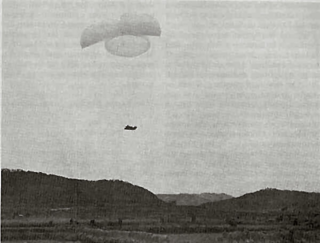
The Battle of Yongyu, also known as the Battle of the Apple Orchard or the Battle of Yongju by the Australians who fought in it, took place between 21 and 22 October 1950 during the United Nations Command (UNC) offensive into North Korea against the Korean People's Army (KPA) that had invaded South Korea during the Korean War. The battle was fought between the 3rd Battalion, Royal Australian Regiment of the 27th British Commonwealth Brigade and the KPA 239th Regiment.
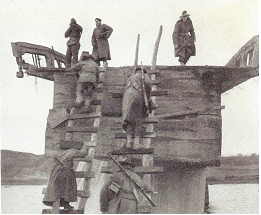
The Battle of Kujin, also known as the Battle of the Broken Bridge, took place during the United Nations Command (UN) offensive towards the Yalu River, which followed the North Korean invasion of South Korea at the start of the Korean War. The battle was fought between Australian forces from 3rd Battalion, Royal Australian Regiment and elements of the 17th Tank Brigade of the Korean People's Army (KPA) over a key bridge across the Taeryong River near Kujin, North Korea. On 25 October the 27th British Commonwealth Brigade had resumed their advance towards Pakchon after crossing the Chongchon River, with 3 RAR as the lead battalion. Arriving at Kujin, the Australians discovered that the centre span of the 300-metre (330 yd) concrete bridge had been demolished by KPA engineers, blocking their passage across the river. A platoon-sized reconnaissance patrol crossed the river using debris from the destroyed span; however, it was soon forced to withdraw by KPA holding the high ground. Airstrikes and artillery fire were subsequently called in at 17:15 by the Australians as they prepared to conduct an assault.

The Battle of the Samichon River was fought during the final days of the Korean War between United Nations (UN) forces—primarily Australian and American—and the Chinese People's Volunteer Army (PVA). The fighting took place on a key position on the Jamestown Line known as "the Hook", and resulted in the defending UN troops, including the 2nd Battalion, Royal Australian Regiment from the 28th British Commonwealth Brigade and the US 7th Marine Regiment, repulsing numerous assaults by the PVA 137th Division during two concerted night attacks, inflicting numerous casualties on the PVA with heavy artillery and small-arms fire. The action was part of a larger, division-sized PVA attack against the US 1st Marine Division, with diversionary assaults mounted against the Australians. With the peace talks in Panmunjom reaching a conclusion, the Chinese had been eager to gain a last-minute victory over the UN forces, and the battle was the last of the war before the official signing of the Korean armistice.

The Battle of Chongju, also spelled Battle of Jeongju took place during the United Nations Command (UN) offensive towards the Yalu River, which followed the North Korean invasion of South Korea at the start of the Korean War. The battle was fought between Australian forces from 3rd Battalion, Royal Australian Regiment and the 17th Tank Brigade of the Korean People's Army (KPA) for control of Chongju, North Korea and the surrounding area. After detecting a strong KPA armoured force equipped with T-34 tanks and SU-76 self-propelled guns on a thickly wooded ridgeline astride the line of advance, the Australians launched a series of company attacks with American M4 Sherman tanks and aircraft in support. Despite heavy resistance the KPA were forced to withdraw and the Australians captured their objectives after three hours of fighting.
The Battle of Maehwa-San was fought for control of the hills and area around Maehwa mountain between the Hoengseong County and Wonju, between 7–12 March 1951, during the Korean War. The British Empire 27th British Commonwealth Brigade was tasked with eliminating the Chinese People's Volunteer Army (PVA) and Korean People's Army (KPA) forces occupying the area.
The 1st Armored Brigade is an Armored formation of People's Liberation Army of the People's Republic of China. The brigade now serves as the armored element under the 65th Army in the Beijing Military Region.
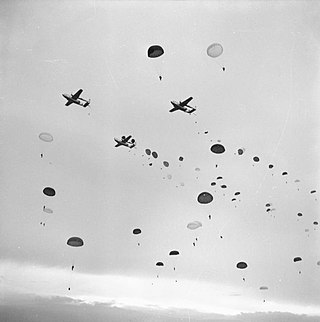
The 16th Airborne Division was an airborne infantry division of the British Territorial Army. It was first commanded by Major-General Roy Urquhart, and had its divisional headquarters in London.
The Canadian Forces were involved in the 1950–1953 Korean War and its aftermath. More than 30,000 Canadians participated on the side of the United Nations, and Canada sent eight destroyers. Canadian aircraft provided transport, supply and logistics. 516 Canadians died, 312 of which were from combat. After the war, Canadian troops remained for three years as military observers.

The Second Battle of the Hook was fought between 18 and 19 November 1952 during the Korean War between elements of United Nations Command (UN) troops consisting of British and Canadian troops of the 1st Commonwealth Division and Chinese forces on a vital sector known as the "Hook" position which was the scene of much bitter fighting before and in the ensuing months. Attacking Chinese forces attempted to take the strategic position but were repelled by a combination of heavy firepower and effective counterattacks.
The 28th Commonwealth Infantry Brigade was a Commonwealth formation of the 1st Commonwealth Division that served in Korea from 1952 to 1954.
